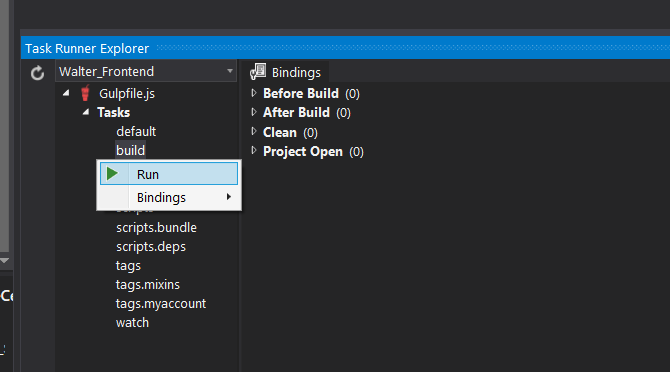LiteDBViewer: a GUI for LiteDB
LiteDBViewer: LiteDB Viewer is a simple tool that let you open a LiteDB database file and shows its contents; think of it as a GUI for LiteDBShell
LiteDB is a small, fast and lightweight NoSQL embedded (filebased) database, great for prototyping for instance.
Productivity Tips for Visual Studio 2017
I’ve written a few blog posts thus far regarding Visual Studio 2017, so I thought I would take some time to discuss the features that were introduced in this latest version that might help your productivity, or that you just may find useful.
You’ll notice that the title of this post mentions that they are “secret”. This is because all of these features are disabled by default, so you’ll need to enable them, either locally (per project) or globally, to take advantage.
Source: “Secret” Productivity Tips for Visual Studio 2017 – CodeProject
Coypu supports browser automation in .Net to help make tests readable, robust, fast to write and less tightly coupled to the UI
Based on Selenium WebDriver:
https://github.com/featurist/coypu/blob/master/README.md
A robust wrapper for browser automation tools on .Net, such as Selenium WebDriver that eases automating ajax-heavy websites and reduces coupling to the HTML, CSS & JS
- A more intuitive DSL for interacting with the browser in the way a human being would, inspired by the ruby framework Capybara – http://github.com/jnicklas/capybara
C# .NET Convert object to dynamic
public dynamic ToDynamic(object value)
{
IDictionary<string, object> expando = new ExpandoObject();
foreach (PropertyDescriptor property in TypeDescriptor.GetProperties(value.GetType()))
expando.Add(property.Name, property.GetValue(value));
return expando as ExpandoObject;
}
Best Online Resources to Learn Test Automation (Selenium) in 2017 – Simple Programmer
Force xUnit.net to run tests serially
Force to run tests in test projects serially; (for integration or ui type of tests)
Add this to the xunit test project app.config file:
<?xml version="1.0" encoding="utf-8" ?> <configuration> <appSettings> ... <add key="xunit.methodDisplay" value="method" /> <add key="xunit.parallelizeAssembly" value="false" /> <add key="xunit.parallelizeTestCollections" value="false" /> <add key="xunit.maxParallelThreads" value="1" /> ...
docs:
https://xunit.github.io/docs/configuring-with-xml.html (.NET)
https://xunit.github.io/docs/configuring-with-json.html (.NET core)
Run default Gulp tasks in Visual Studio 2015
How to run the default gulp tasks for a front end web project in Visual Studio 2015.
Open Task Runner Explorer window in Visual Studio.
Right-click Tasks > build (build should be the list of tasks needed) and Run. Css and js files will be created.

Getting started with .NET Core Series – Michael Crump
Learn how to work with .NET Core in this mini-series
Source: Day 1 – Installing and Running .NET Core on a Windows Box – Michael Crump
AutoHistory – Visual Studio Extension to easily roll back code a few minutes or hours.
Have you ever found yourself wishing you could roll back a few hours to a piece of code you had working but have made changes to? This extension provides an early preview of an automatic, no-configuration history tracking facility for your local machine. Just install the extension, and whatever you do in your projects and solutions, it silently and efficiently tracks the changes you make to any files that you have opened in the Visual Studio Editor. Then, when you find yourself in need of back-tracking to
Source: AutoHistory – Visual Studio Marketplace
See this Channel 9 video: http://go.microsoft.com/fwlink/?LinkID=390499